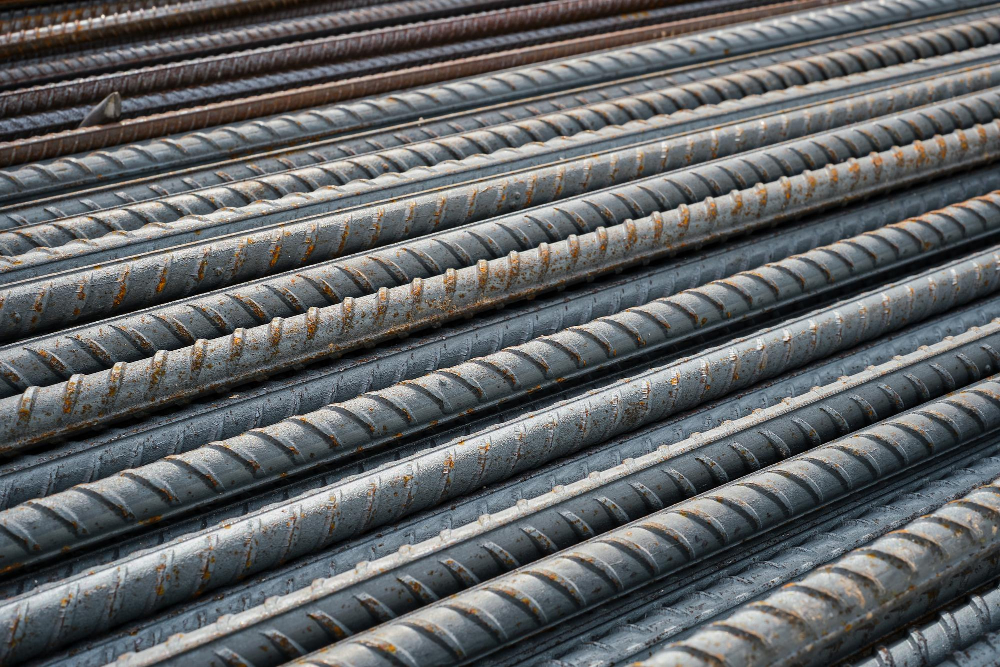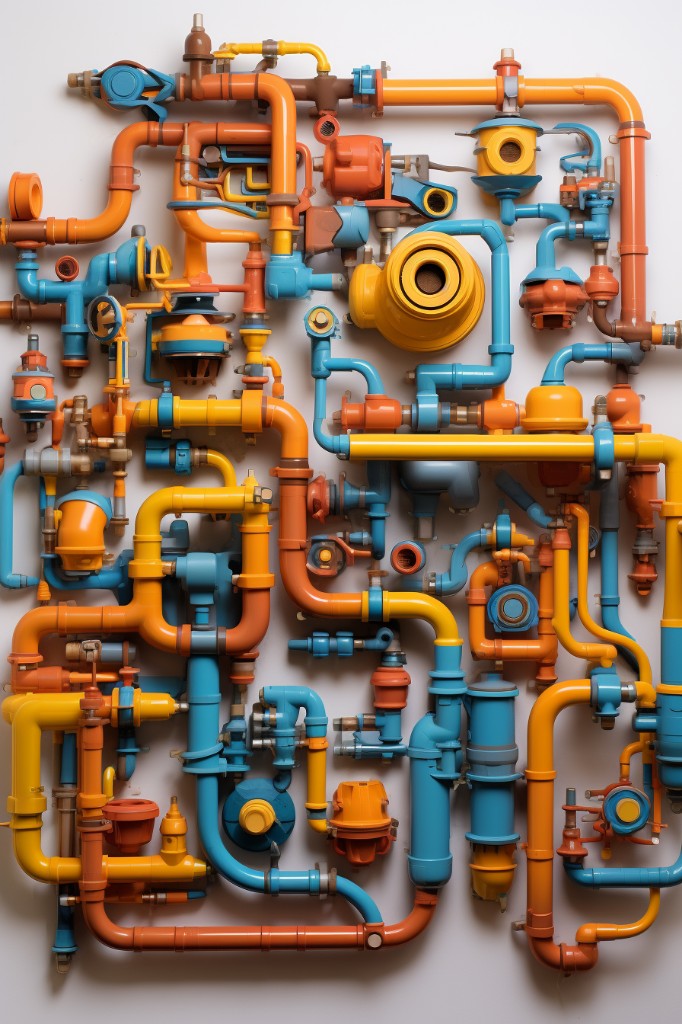Last updated on
Discover the world of copper alternatives as we dive into their benefits, applications, and potential to revolutionize various industries in this informative blog post.
Welcome to my blog, where I share my passion for home decor and finding creative solutions on a budget. Today, we’re exploring the world of copper alternatives.
Copper has been a popular trend in home decor for some time now, but it can be quite expensive. Fear not! There are plenty of alternative options that can give you the same look and feel without breaking the bank.
In this article, I’ll be sharing some of my favorite copper alternatives that will add warmth and style to your space without sacrificing your wallet. So let’s get started!
Aluminum: Lightweight and Affordable

It’s lightweight, affordable, and easy to work with, making it an excellent choice for home decor projects. Aluminum can be easily shaped into different forms and finishes such as brushed or polished to mimic the look of copper.
One of the most significant benefits of aluminum is its weight. Unlike copper which can be quite heavy, aluminum is much lighter making it easier to handle during installation or transportation.
This makes it ideal for large-scale projects where weight may become an issue.
Another advantage of using aluminum over copper is its affordability. Copper prices have been known to fluctuate significantly due to market demand and supply chain disruptions; however, this isn’t the case with aluminum as there are abundant sources available worldwide.
In terms of maintenance requirements, Aluminum requires minimal upkeep compared to other metals like brass or bronze which require regular polishing due their tendency towards tarnishing over time.
Zinc: Durable and Low Maintenance

It has a similar appearance to aged copper, with a blue-grey patina that develops over time. Zinc is also resistant to corrosion and can withstand harsh weather conditions, making it an excellent choice for outdoor applications such as roofing or gutters.
One of the benefits of using zinc in your home decor projects is its versatility. It can be used for everything from countertops and backsplashes in the kitchen, to wall cladding or decorative accents throughout your living space.
Another advantage of zinc over copper is its affordability. While still more expensive than some other alternatives like aluminum or tin, it’s significantly cheaper than pure copper while offering many similar benefits.
When working with zinc, it’s important to note that it requires special handling during installation due to its softness compared with other metals like steel or aluminum. However, once installed correctly by professionals who are familiar with this material’s unique properties – you’ll enjoy years of low-maintenance beauty without worrying about rusting or fading colors!
Brass: Attractive and Versatile

It’s an alloy of copper and zinc, which gives it a unique golden hue that can add warmth and elegance to any space. Brass is also incredibly versatile, making it perfect for various applications such as lighting fixtures, hardware accessories, furniture accents, and more.
One of the most significant advantages of brass over other metals is its malleability. This means that brass can be easily shaped into intricate designs or patterns without losing its strength or durability.
Brass doesn’t corrode quickly like iron or steel does; hence it requires minimal maintenance.
Another benefit of using brass in your home decor projects is its ability to complement different styles effortlessly. Whether you’re going for a vintage look with antique finishes or modern aesthetics with sleek lines and polished surfaces – there’s always room for some beautiful pieces made from this metal alloy.
Bronze: Strong and Corrosion Resistant

It’s an alloy made of copper, tin, and sometimes other metals like zinc or nickel. Bronze can be found in various shades ranging from reddish-brown to golden-yellow depending on the amount of tin added.
One advantage of bronze over copper is its durability. It’s stronger than pure copper and less prone to cracking or breaking under stress.
It doesn’t corrode as easily as other metals which makes it ideal for outdoor applications such as sculptures or architectural elements.
Bronze also has a unique aesthetic appeal that adds warmth and character to any space where it’s used. Its versatility allows you to incorporate this material into your decor in many ways – from light fixtures and hardware accents, all the way up through larger statement pieces like furniture legs or decorative objects.
Stainless Steel: Robust and Modern
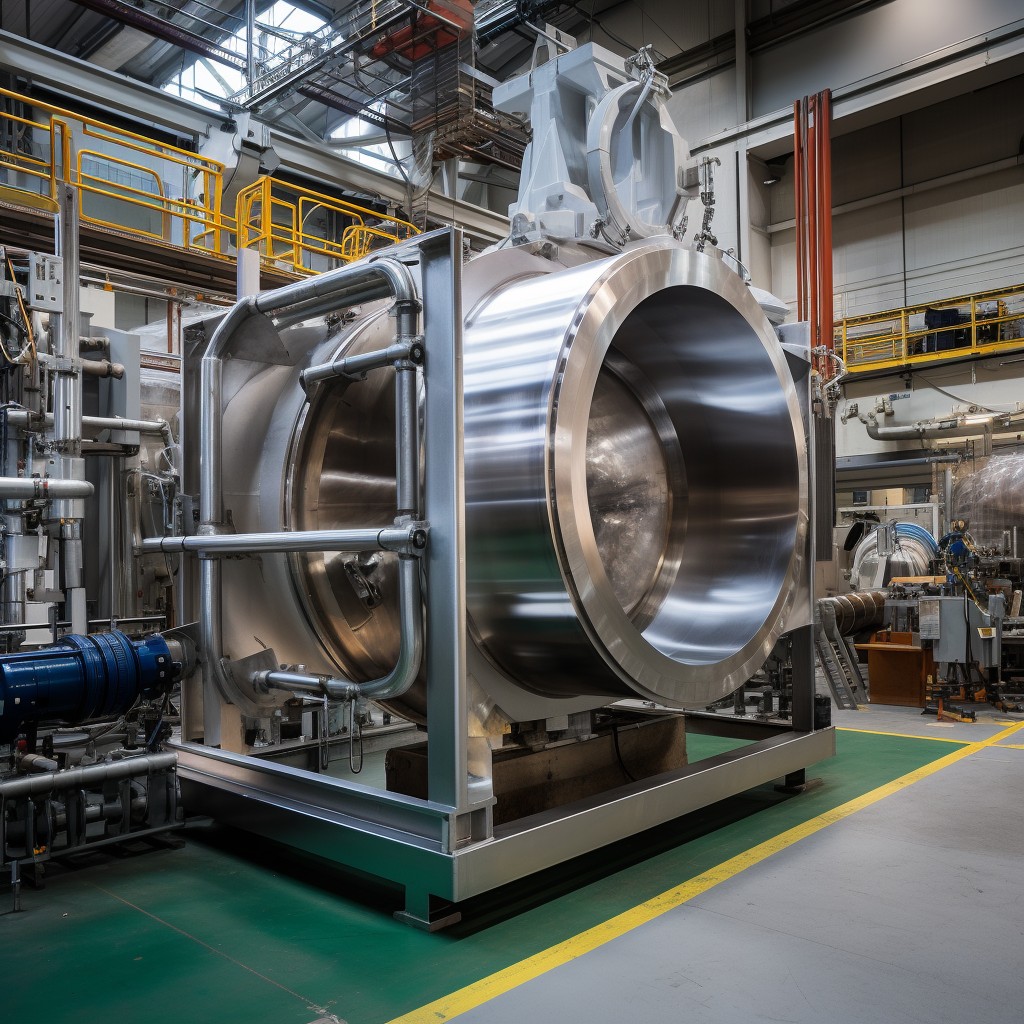
It’s known for its durability, strength, and modern aesthetic appeal. Stainless steel is an alloy of iron, carbon, and other elements such as chromium and nickel which give it its unique properties.
One of the main benefits of stainless steel over copper is that it’s highly resistant to corrosion. This makes it ideal for use in areas with high humidity or exposure to water such as kitchens or bathrooms.
Stainless steel doesn’t require any special maintenance like polishing or waxing which can be time-consuming with copper.
Another advantage of using stainless steel instead of copper is cost-effectiveness. While still more expensive than some other alternatives on the market like aluminum or tin, stainless steel offers a sleek look at a lower price point than pure copper.
In terms of design versatility, there are many ways to incorporate this material into your home decor scheme beyond just appliances and fixtures – think furniture accents like chairs legs or table bases! The clean lines and modern feel make it perfect for contemporary spaces but can also add an industrial edge when paired with rustic materials like wood.
Nickel: Conductive and Non-Magnetic

It’s known for its high conductivity and non-magnetic properties, making it ideal for applications where electromagnetic interference (EMI) needs to be minimized. Nickel is also corrosion-resistant, which makes it suitable for use in harsh environments.
In home decor, nickel can be found in light fixtures, cabinet hardware, and faucets. Its silver-like appearance gives off a modern and sleek vibe that complements any contemporary design style.
In the electronics industry, nickel has been used as a substitute for copper conductors due to its lower resistance levels at higher frequencies. This property makes it useful in radio frequency (RF) circuits such as antennas or filters.
Moreover, nickel alloys are commonly used in aerospace engineering because of their strength-to-weight ratio and ability to withstand extreme temperatures without losing their mechanical properties.
Tin: Affordable and Non-Toxic

It’s a non-toxic metal, making it an excellent choice for food packaging and storage containers. Tin also has anti-corrosive properties, which makes it ideal for outdoor use.
In home decor, tin can be used to create unique accents such as tin tiles or backsplashes in the kitchen or bathroom. It’s easy to install and maintain while adding character to your space.
One of the most significant advantages of using tin over copper is its affordability. Tin costs significantly less than copper but still provides similar aesthetic appeal when polished or plated with other metals like silver or gold.
Silver: High Conductivity and Aesthetic Appeal

Silver has been used for centuries in jewelry making due to its lustrous shine and durability. It’s also a popular choice in the electronics industry because of its superior electrical conductivity compared to copper.
In terms of cost, silver is more expensive than copper but still less costly than gold or platinum. However, it’s important to note that silver can tarnish over time if not properly cared for.
When it comes to home decor, incorporating silver accents into your space can add a touch of elegance and sophistication. From picture frames and candle holders to tableware and decorative objects – there are plenty of ways you can incorporate this precious metal into your interior design scheme.
Graphene: High Strength and Lightweight

It is an incredibly strong and lightweight material, making it an excellent alternative to copper in various applications. Graphene consists of a single layer of carbon atoms arranged in a hexagonal lattice pattern, giving it exceptional strength and flexibility.
One significant advantage of graphene over copper is its conductivity. Graphene has the highest electrical conductivity among all known materials, making it ideal for use as conductive wires or circuits.
Graphene’s high thermal conductivity makes it suitable for use as heat sinks or other cooling applications.
Another benefit of using graphene instead of copper is its weight reduction potential. Due to its thinness and lightness compared to traditional metals like copper, incorporating graphene into products can significantly reduce their overall weight without sacrificing strength or durability.
Carbon Fiber: The Future of Conductive Materials

It’s lightweight yet incredibly strong and durable. Carbon fiber is also an excellent conductor of electricity, making it a promising alternative to copper.
In the electronics industry specifically, carbon fiber can be used as a replacement for copper wires in circuit boards due to its high conductivity. This would result in smaller and lighter devices with faster processing speeds.
Moreover, carbon fibers are being developed into conductive textiles that could revolutionize wearable technology by allowing for more comfortable clothing with built-in sensors or even heating elements.
While still relatively expensive compared to traditional materials like copper or aluminum, advancements in production methods have made carbon fiber more accessible than ever before. As we continue to explore sustainable alternatives across all industries while keeping costs low without sacrificing quality or performance – it’s clear that the future of conductive materials lies within innovative solutions like carbon fibers!
Conductive Polymers: Flexible and Lightweight
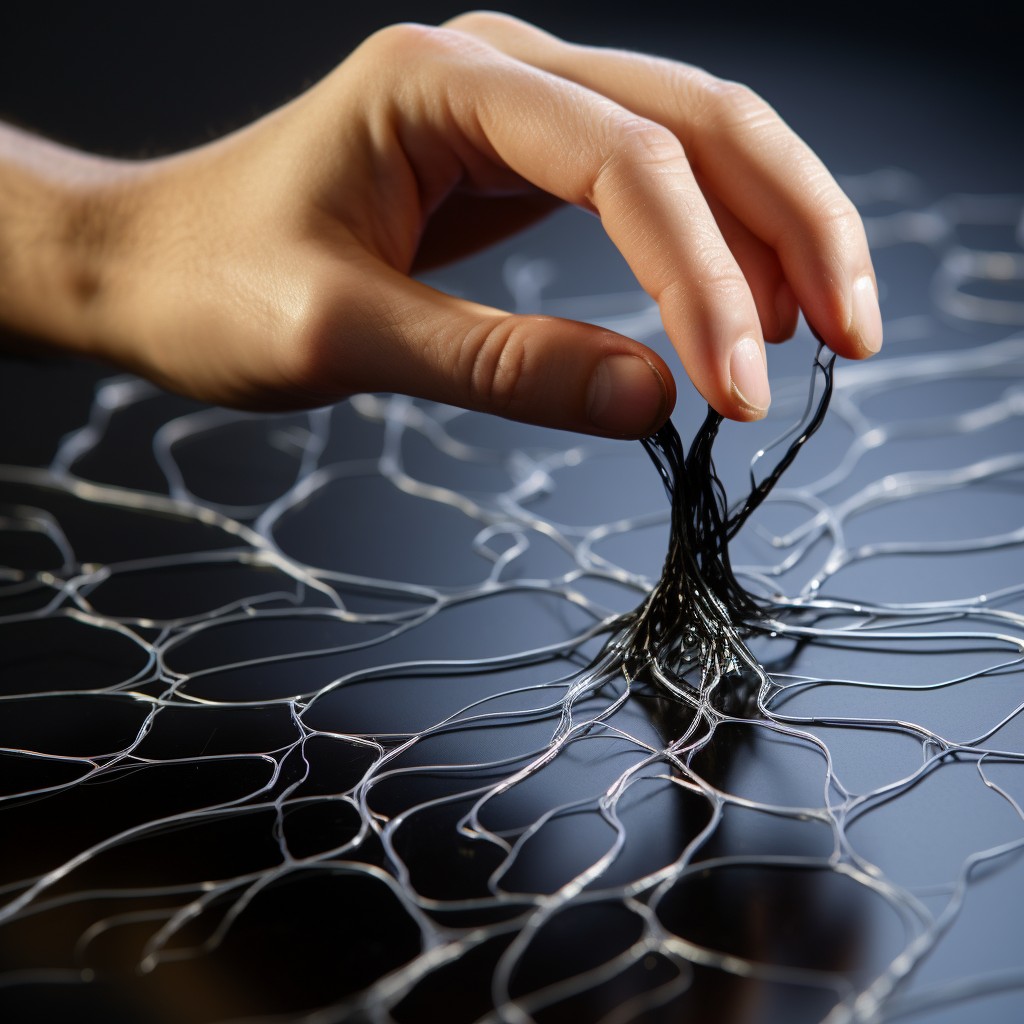
These materials have unique properties that make them ideal for use in various industries, including electronics and aerospace.
One of the most significant advantages of conductive polymers is their flexibility. Unlike traditional metals like copper or aluminum, these materials can be molded into any shape without losing their conductivity.
This makes them perfect for creating flexible circuits that can bend and twist without breaking.
Another benefit of conductive polymers is their lightweight nature. They are much lighter than traditional metals, making them an excellent choice for applications where weight is a concern.
In addition to being flexible and lightweight, conductive polymers also offer other benefits such as low cost production compared to metal-based alternatives like copper or silver.
Ceramic Composites: High Strength and Heat Resistant

They are made by combining ceramic fibers with a polymer matrix, resulting in materials that can withstand extreme temperatures and harsh environments. Ceramic composites have been used in various industries such as aerospace, automotive, and defense.
In home decor, ceramic composite tiles can be used for flooring or backsplashes in kitchens or bathrooms. These tiles come in different colors and patterns that mimic the look of natural stone or wood but offer better durability than traditional materials.
One of the main advantages of using ceramic composites is their ability to resist corrosion caused by moisture exposure. This makes them ideal for outdoor applications like patio furniture or garden sculptures.
Copper Alternatives in Electronics
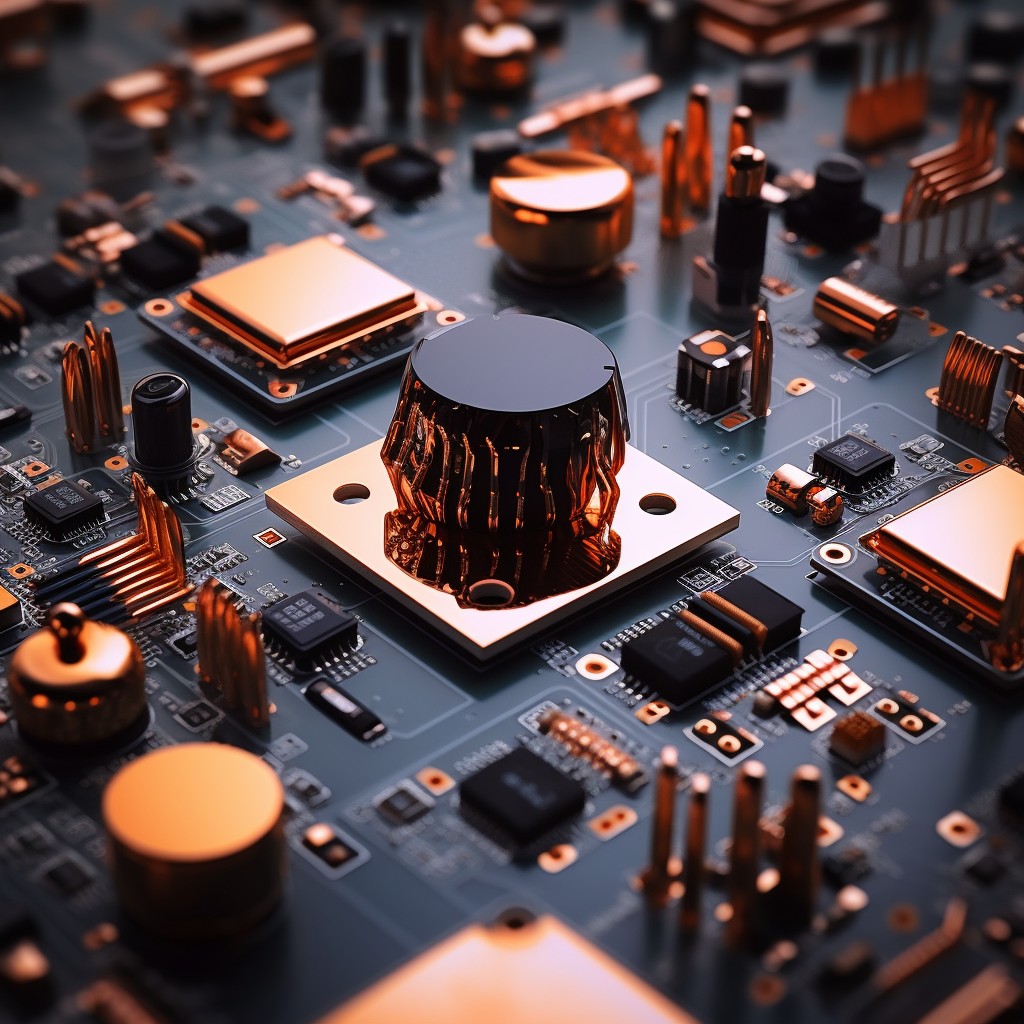
However, copper alternatives are gaining popularity in the electronics industry due to their unique properties that make them suitable for specific applications.
Aluminum is a popular alternative to copper as it is lightweight and affordable. It’s commonly used in power transmission lines, heat sinks, and electronic packaging.
Silver is another excellent conductor of electricity with higher conductivity than copper but comes at a much higher cost. It’s often used in high-end audio equipment where sound quality matters most.
Carbon fiber offers an exciting alternative as it provides both strength and electrical conductivity while being lightweight. This makes it ideal for aerospace applications such as satellites or aircraft components where weight reduction is critical.
Conductive polymers are flexible materials that can be molded into any shape making them perfect for wearable technology like smartwatches or fitness trackers.
Fiber optics offer an entirely different approach by using light instead of electricity to transmit data over long distances without signal loss or interference from electromagnetic fields.
As you can see, there are plenty of options available when looking beyond traditional copper wiring solutions within electronics manufacturing processes.
Aluminum Vs. Copper Conductors
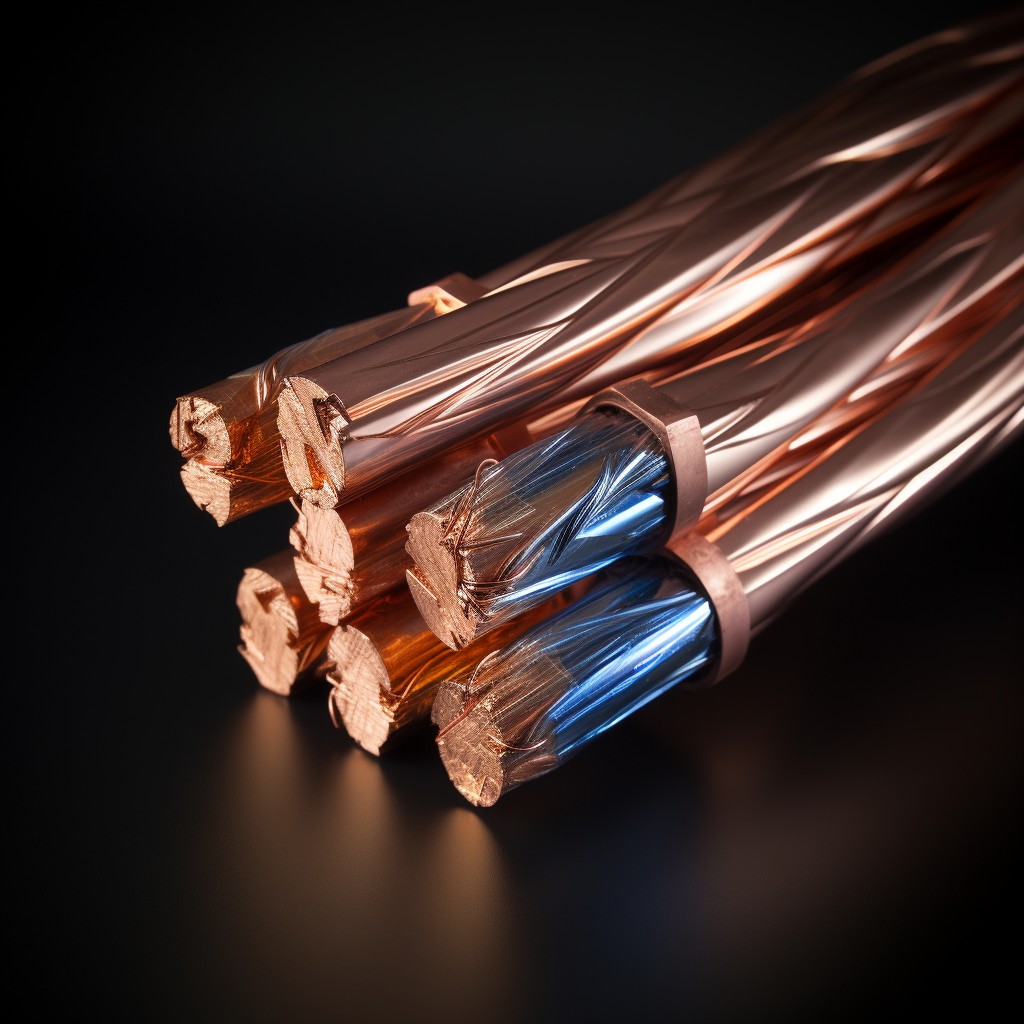
However, aluminum is a popular alternative that offers several advantages over copper conductors. Aluminum is lightweight and more affordable than copper, making it an attractive option for large-scale projects such as power transmission lines.
One of the main differences between aluminum and copper conductors is their resistance to corrosion. Copper tends to corrode faster than aluminum in certain environments such as coastal areas with high salt content in the air or soil with high acidity levels.
This can lead to increased maintenance costs over time.
Another factor that sets these two materials apart is their thermal expansion rates. Aluminum expands at a higher rate than copper when exposed to heat which can cause issues if not accounted for during installation or operation of electrical systems.
Despite its benefits, there are also some drawbacks associated with using aluminum conductors compared to traditional copper wiring systems including lower tensile strength and greater susceptibility towards oxidation leading up towards overheating problems resulting from loose connections due to its low melting point.
Fiber Optics for Data Transmission

Fiber optic cables use light to transmit data instead of electricity, which makes them faster and more efficient than copper wires. They are also immune to electromagnetic interference and can transmit signals over longer distances without losing quality.
In addition to their technical advantages, fiber optic cables are also environmentally friendly because they require less energy to operate than copper wires. They are made from glass or plastic fibers that do not corrode or degrade over time like copper does.
If you’re considering upgrading your home network or office infrastructure, consider using fiber optics instead of traditional copper wiring.
Copper Substitute in Renewable Energy

Copper has been a popular choice for wiring and electrical components in solar panels and wind turbines due to its high conductivity. However, as demand for renewable energy grows, so does the need for more affordable materials.
One promising alternative is aluminum. It’s lightweight and abundant, making it an attractive option for large-scale projects like wind farms or solar fields.
Aluminum has a lower melting point than copper which means less energy is required during production.
Another option gaining traction is silver-coated conductive nylon fibers that can be woven into fabrics used in solar panels or other electronic devices such as wearable technology.
While these alternatives may not have the same level of conductivity as copper yet they are still being developed further with research focused on improving their performance while reducing costs.
Copper Alternatives in Transport and Space Industries

However, copper is also heavy and expensive. As a result, engineers are exploring alternative materials that can provide similar benefits without adding weight or cost.
One such material is aluminum. Aluminum alloys have become increasingly popular in the aerospace industry because of their lightweight properties while still maintaining high strength levels.
In addition to being lighter than copper, aluminum also has better thermal conductivity which makes it ideal for heat dissipation applications.
Another promising alternative is carbon fiber composites which offer high strength-to-weight ratios making them perfect for use in aircraft structures where weight reduction is critical.
In the automotive industry too there’s an increasing trend towards using alternatives like aluminum instead of copper as it helps reduce vehicle weight leading to improved fuel efficiency.
Environmental Impacts of Copper Vs Alternatives

Copper mining requires large amounts of energy and water, which can lead to soil erosion, deforestation, and water pollution. Copper waste products can contaminate nearby ecosystems.
Fortunately, there are several alternatives that offer more sustainable options for those concerned about the environment. For example:
- Aluminum has a lower carbon footprint than copper due to its lighter weight.
- Zinc is abundant in nature and easily recyclable.
- Carbon fiber has low emissions during production compared to traditional metals.
By choosing these alternative materials over copper whenever possible we reduce our impact on the environment while still enjoying high-quality products with similar properties as their expensive counterparts.
Cost Analysis of Copper and Alternatives

Copper is undoubtedly an excellent conductor of electricity and heat, but it can be quite expensive compared to other materials. However, the good news is that there are plenty of affordable options available that offer similar performance.
Aluminum, for example, is one such alternative that has gained popularity in recent years due to its low cost and lightweight nature. It’s also highly conductive and corrosion-resistant making it ideal for electrical applications.
Zinc offers another affordable option with high durability and low maintenance requirements. Its unique properties make it suitable for roofing material as well as decorative accents in home decor.
Brass provides an attractive alternative with versatility in design possibilities while still being relatively inexpensive compared to copper.
Bronze offers strength combined with corrosion resistance making this alloy perfect for outdoor applications like sculptures or door handles where exposure to moisture may occur frequently.
Stainless steel provides a modern look while offering robustness at a lower price point than copper would typically command. While each material has different strengths depending on the application required; when considering costs alone – aluminum tends towards being the most economical choice followed by zinc then brass respectively.
FAQ
What is the best substitute for copper?
The best substitute for copper is aluminum, which is a cheaper alternative.
Can aluminum replace copper?
Yes, aluminum can replace copper as it offers a lower material cost and protection against dramatic fluctuations in the metal markets due to its abundance and recyclability.
What material is better than copper?
Aluminium is better than copper due to its greater flexibility and higher resistivity, resulting in lower eddy losses during the production process.
What is a good substitute for copper in batteries?
A good substitute for copper in batteries would be Nickel or Gunmetal (Red Brass), as they offer similar voltage potentials at -0.3V and comparable Anodic Indices.
What are the advantages and disadvantages of using copper alternatives in electrical applications?
Copper alternatives in electrical applications offer advantages such as cost-effectiveness and lighter weight, but also have disadvantages such as lower conductivity and increased susceptibility to corrosion.
How does the performance of silver as a copper alternative compare in terms of conductivity and cost?
"Although silver offers a higher conductivity than copper, it is significantly more expensive, making copper a more cost-effective choice for most applications."
In what industries are copper alternatives most commonly used, and why?
Copper alternatives are most commonly used in the electrical, construction, and transportation industries due to their cost-effectiveness, lighter weight, and enhanced performance.
Recap
Liked this article? Here's what you can read next:
